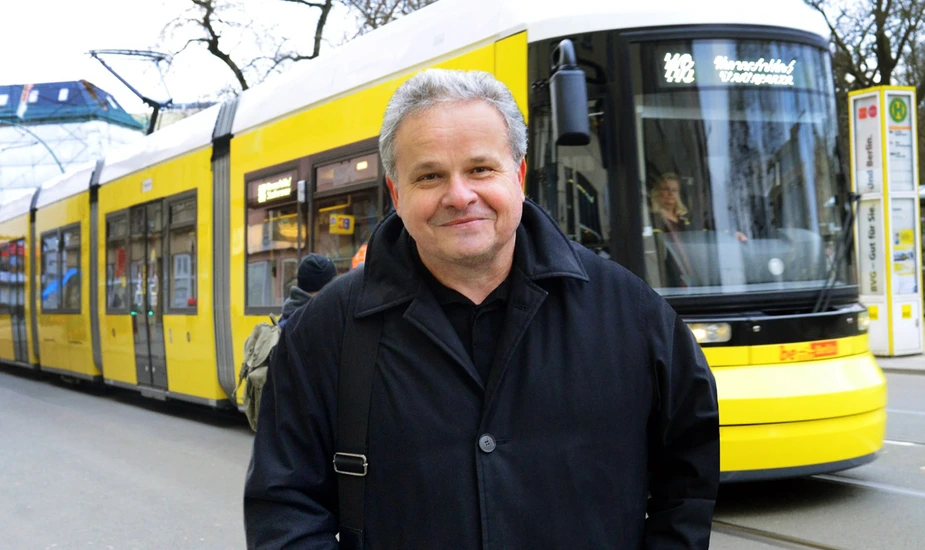Design Is a Must
Adlershof companies are balancing form and function
Good industrial design bridges the gap between fine form and first-class function. Well-designed devices are user-friendly and enjoyable. Not every designer succeeds in accomplishing this. However, many companies on our campus have mastered this art. Here are two examples.
Customers of the BVG, Berlin’s public transport company, reach their destination in style – whenever they get on the new Flexity tram by Bombardier Transportation. Its design has won several awards including the “iF product design award”. IFS design was responsible for designing the sleek low-floor tram from the interior, to the driver’s cabin as well as the distinctive chassis. The team led by Jochen Dittrich was completely in its element. The Adlershof-based company is specialized on railway vehicles and design concepts for local public transportation. They recently designed the new generation of trams for the Chinese city of Shenyang and have already begun working on a similar project in Taiwan. The team from Adlershof also designs e-busses, horse box trailers, vehicle interiors down to the last seat, houseboats, and kitchen modules.
All these tasks are trickier than one would expect. Creativity is only one of the skills required on the job. “Aside from creative requirements, our work tasks include analysis, technical conceptualization, and coordination with our partners in engineering and customers,” explains Dittrich who is an accomplished industrial designer. Furthermore, today many customers want the prototypes presented as lifelike 3D models and as real models to scale. Good design is a lot of work. “The process is quite complex and often underestimated,” the head of IFS tells us. It’s not as much an artist’s job, as a job for well-trained industrial designers with a knack for engineering, i.e. people like Dittrich, who started his career building railway coaches. His secretly held dream is quite relatable: to draw up a design, for example, for a car based purely on user needs and free from the restrictions of the manufacturers.
The fact that design is much more than aesthetics and ornament is evident to anyone looking at a radiometer produced by sglux SolGel Technologies, a producer of UV measurement technology. Any such device is usually built around its purpose. Sglux measuring devices, however, fit comfortably in your hand like a smartphone would. The touchscreen and the operating elements are as visually appealing as they are intuitive. Tilman Weiss, head of sglux, appreciates good design and is convinced that “aesthetics should not be restricted to museums. Product design integrates aesthetics into our everyday life – that’s very important.” It’s important because it is not art for art’s sake: “Our UV measuring devices are used in security, in doctor’s surgeries and clinics, in food technology, and for monitoring production processes,” explains Weiss. The essential task of the radiometer is to display the measurement reading to the user who has to be able to understand the data on the spot. “A well-designed appliance with thought out display functions that are aesthetically pleasing improves the human-machine interaction and reduces interpretation errors,” says Weiss.
This also applies to a well-designed manual. The design of the product’s technical documentation is an important quality aspect: “An appealing data sheet is better understood and reduces operating errors as well as inefficient communication.” Form doesn’t always need to follow function, according to the head of sglux. He offers a different take on a well-known slogan: form inspires function. “We hope that our current building project in Adlershof will bring this guiding principle to life,” reports Weiss. The architecture of the new company headquarters aims at “inspiring its staff to free thinking and free movement therefore stimulating their readiness to constantly improve products.”
By Chris Löwer for Adlershof Journal
